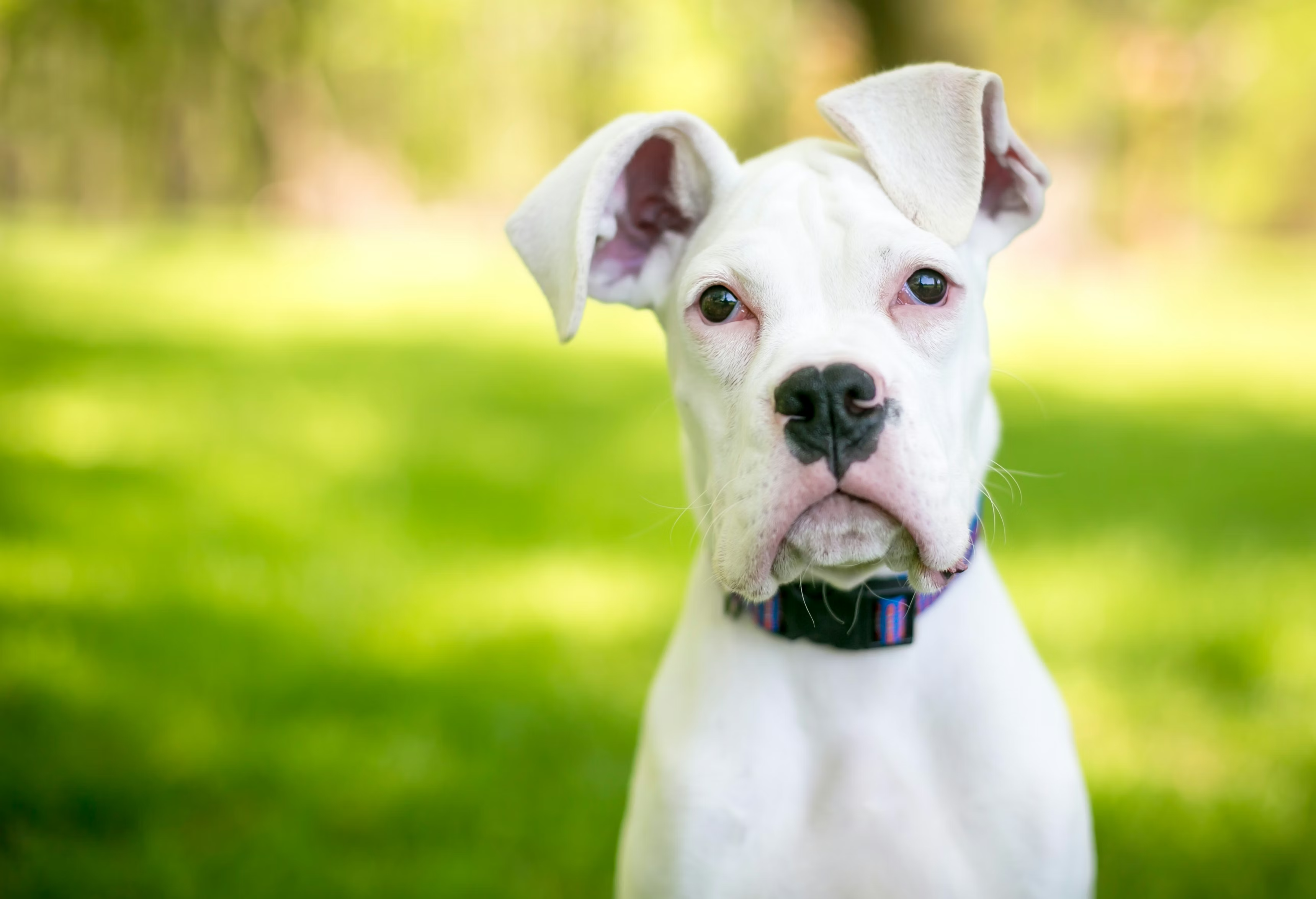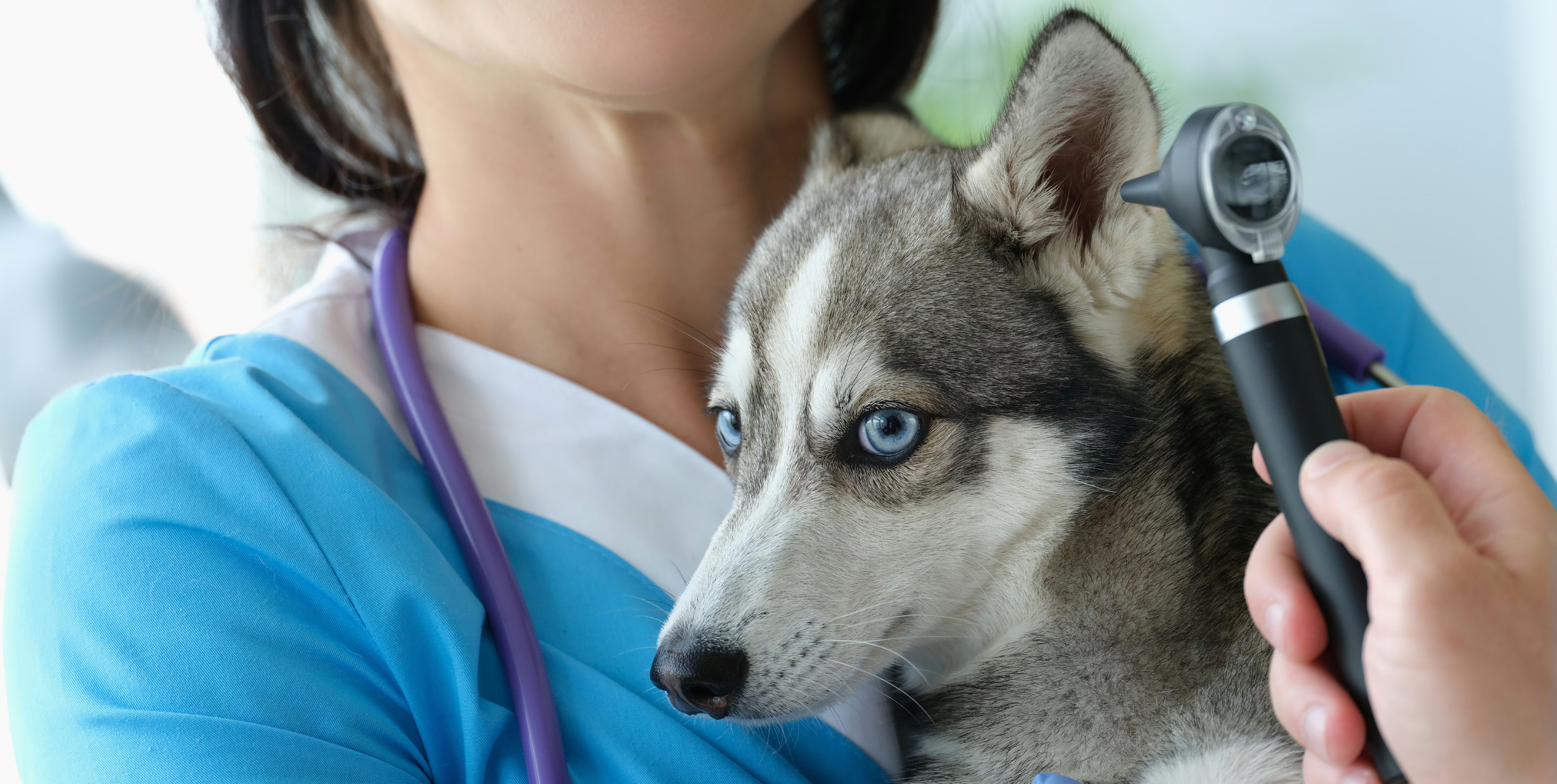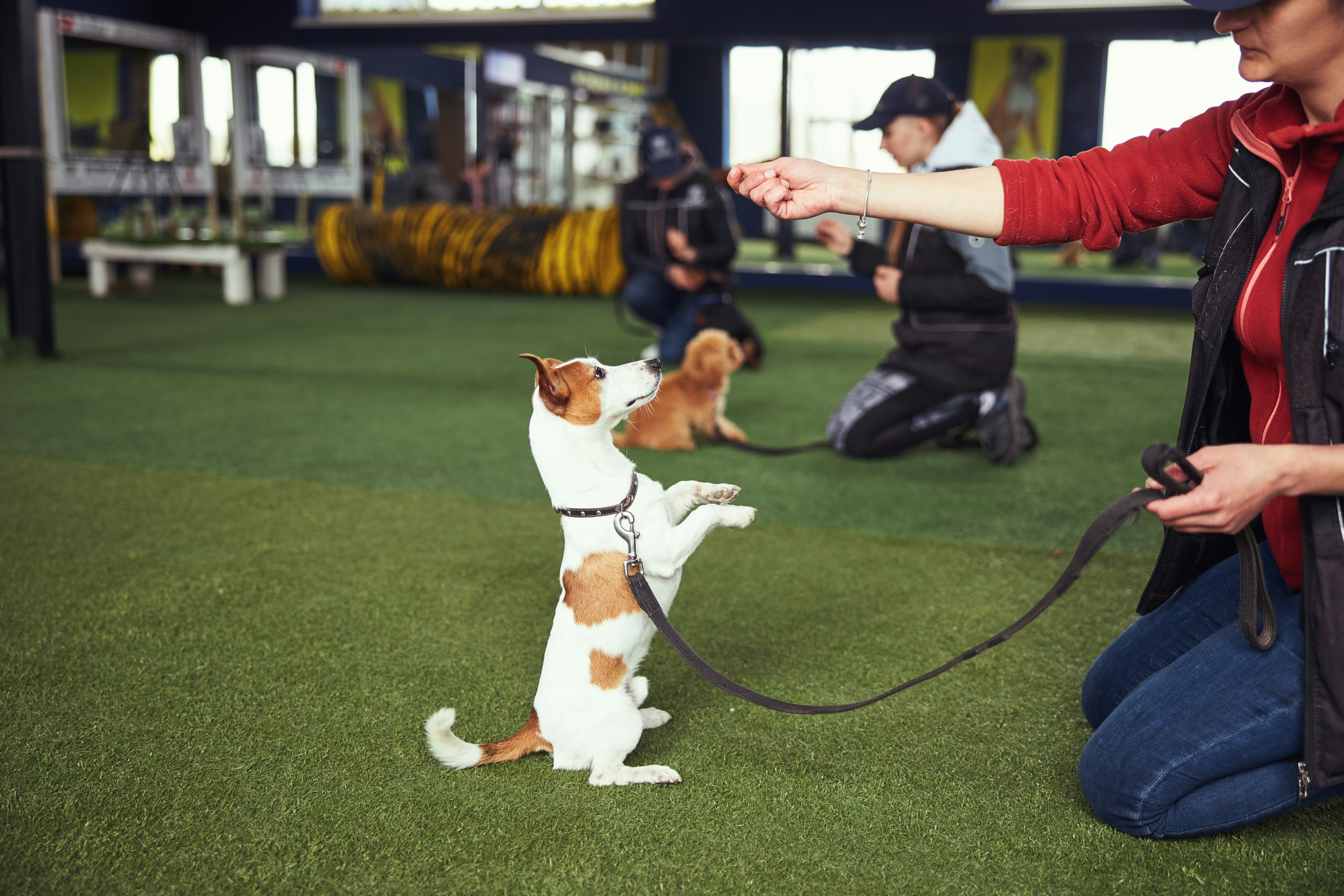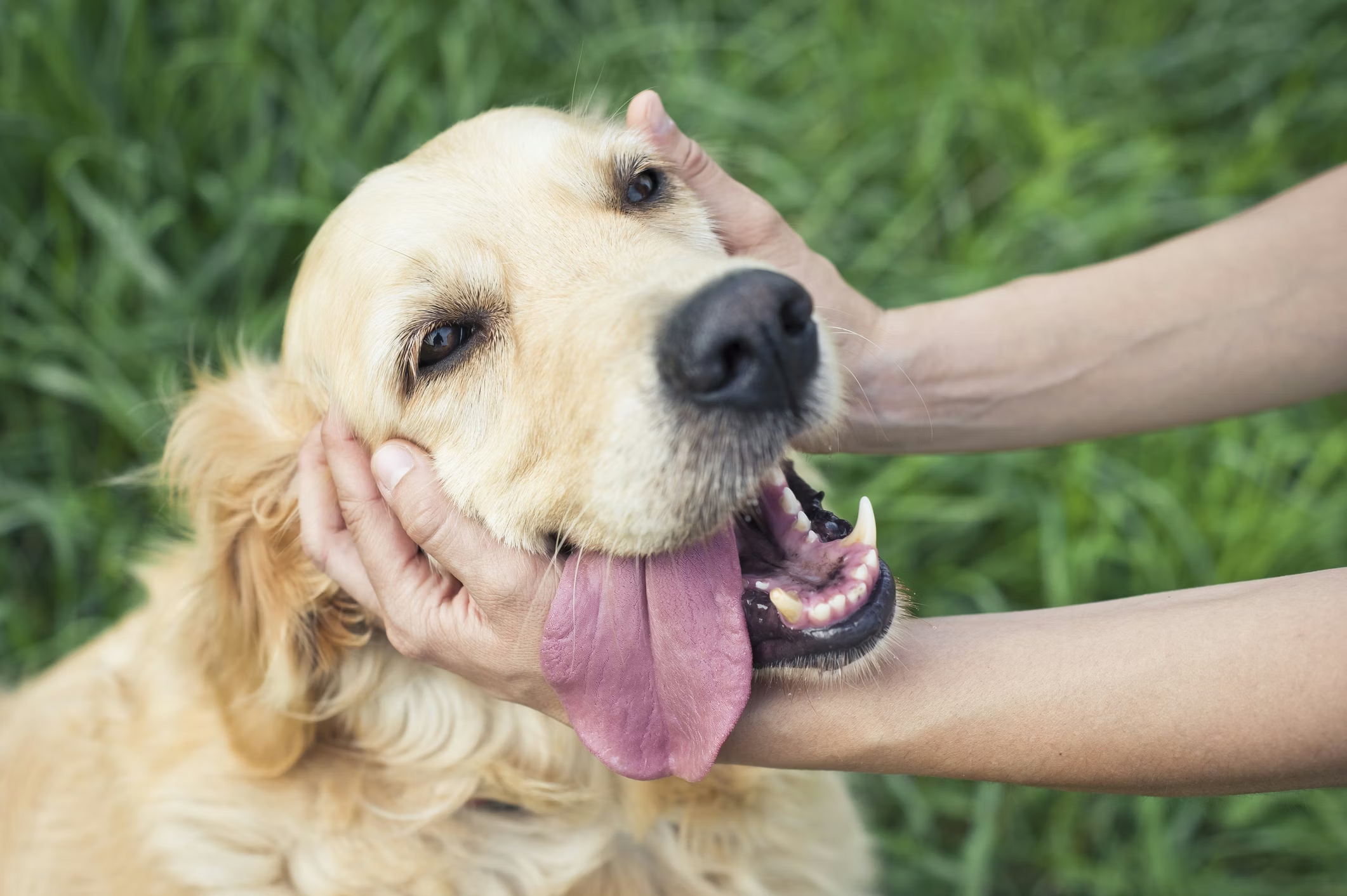Deafness in dogs can occur for many reasons, ranging from genetic conditions to age-related changes. Sometimes hearing loss is temporary, while other times it’s a permanent condition. As a pet parent, the idea of your dog losing their hearing can be concerning, but the more you understand about your dog’s condition, the easier it will be for you to give them the support they need. So, let’s dig into the causes of deafness in dogs, how to recognize the signs, and practical advice for caring for a deaf dog.
Causes of deafness in dogs
All puppies are born deaf, but most develop their hearing when they’re about three weeks old. However, some dogs with congenital conditions remain deaf or become deaf within a few months of birth. Others lose their hearing at some other point in their lives. Here are some of the most common reasons a dog may experience deafness.

Genetic factors
Some dog breeds are genetically predisposed to deafness. For example, the genetic variants responsible for the merle and piebald coat patterns are also linked to increased risk of deafness because of their effect on melanocytes. Melanocytes are pigment-producing cells responsible for the color of a dog’s coat, skin, and eyes, but are also essential for the proper functioning of the inner ear. The piebald and merle genes can reduce the distribution of melanocytes in the body, thereby increasing the risk of hearing issues.
Breeding practices play a crucial role in reducing the prevalence of congenital deafness linked to these genes. Responsible breeders use genetic testing to identify carriers of the merle and piebald genes and avoid combinations (e.g., breeding two merles) that increase the risk of deafness. However, there are other genetic variants associated with deafness, some of which can be screened for using Wisdom Panel’s dog DNA tests, and some for which specific gene mutations have not been identified.
Some of the dog breeds predisposed to deafness include:
- Dalmatians
- Boxers
- Australian Shepherds
- Bull Terriers
- English Setters
Ear infections
External ear infections can cause build-up of matter in the ear, which can block sound waves and cause partial hearing loss. When properly treated, hearing will typically be restored once the infection clears. Similarly, infections in the inner ear that damage the eardrum can often lead to temporary hearing loss that returns after treatment. However, infections in the inner ear that damage the nerves often result in irreversible partial or complete deafness.
Noise-induced hearing loss
Dogs persistently exposed to loud noises over time—like gunfire or fireworks—can experience hearing loss. Military and hunting dogs at risk for this type of exposure may benefit from wearing ear protection.
Aging
Just like people, dogs may lose their hearing as they age. This condition, known as presbycusis, occurs due to the natural degeneration of the ear structure.
Trauma
Physical trauma to the head or ears can cause sudden hearing loss in dogs. Injuries from accidents, falls, or blunt force can damage the delicate structures within the ear or disrupt the nerves that transmit sound signals to the brain. In some cases, injuries may rupture the eardrum, leading to temporary or permanent hearing loss. Severe head trauma may also result in brain injuries that affect the areas responsible for processing sound.
Diseases
Conditions that impact metabolism, such as hypothyroidism and Cushing’s disease, may leave dogs more at risk for deafness due to disruptions in nerve function and blood flow. Conditions that affect the nervous system, including epilepsy or brain cancer, can impact the brain’s ability to process sound signals.

Signs of deafness in dogs
Recognizing hearing loss in dogs is the first step toward getting them the help they need. Here are a few common signs to look for:
- They don’t respond to their name or commands, especially in noisy environments
- They don’t react to sounds that used to excite or alarm them (e.g., doorbells or vacuum cleaners)
- Their sleeping patterns change and they may not wake up as easily
- They startle easily when touched or approached from behind
- They shake their head or scratch their ears excessively, which could indicate an underlying ear issue
If you notice any of these behaviors, schedule an appointment with your veterinarian. They can do a thorough exam to determine whether your dog is experiencing hearing loss and discuss appropriate next steps.
Treatment options for hearing loss in dogs
If your dog’s hearing loss is treatable, the best course of action will depend on the root cause. Your veterinarian can use diagnostic testing to determine the cause of the deafness and work up an appropriate treatment plan.
Medical treatment for ear infections
If an ear infection is to blame for a dog’s deafness, medication can often restore hearing. In severe cases, surgery may be required to remove damaged tissue.
Managing underlying conditions
If the hearing loss stems from a condition like hyperthyroidism or epilepsy, ongoing treatment to manage the underlying issue might help slow or stabilize the progression of deafness.
Adaptation
For congenital or age-related hearing loss, adapting your dog’s environment and communication methods can dramatically improve their quality of life.

Caring for a deaf dog
Sharing your life with a deaf dog comes with unique challenges, but there are things you can do to give your pup a safe and enriching environment.
Use visual cues
Train your dog using hand signals instead of verbal commands. Consistent, simple gestures can help your dog understand what you’re asking of them.
Focus on safety
A deaf dog can’t hear cars or other dangers, so it’s best to keep them on a leash or in a securely fenced area. Consider adding a tag to their collar that says, “I am deaf” to alert others to their condition.
Create a vibration-based communication system
Many deaf dogs respond well to vibrations. For instance, tapping your foot on the floor can alert them to your presence.
Be patient and consistent
Adapting to a new way of communicating takes time. Stay patient and reward your dog’s progress with treats, affection, and playtime. Maintaining predictable routines will also help them feel confident as they move through their day.
Enrich their environment
There are plenty of ways a deaf dog can have a full and happy life. Puzzle toys, scent-based games, and other enrichment activities can keep them mentally and physically engaged.
Final Thoughts
By understanding the causes of deafness in dogs, recognizing the signs of hearing loss, and exploring treatment options, you can help your pup thrive despite their hearing challenges. Whether your dog is living with a genetic condition, coping with aging, or recovering from a medical issue, there are steps you can take, in partnership with your veterinarian, to give them a high quality of life.
Additional resources















